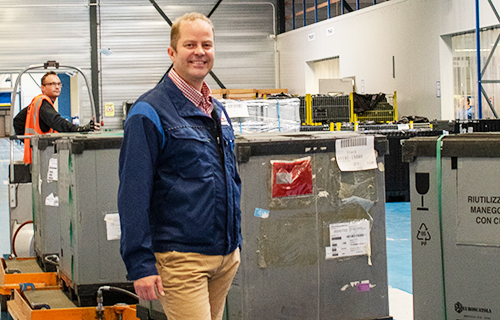implementation of sap
In Dutch, SAP means “juice”, and we have certainly been squeezing our brains lately. On 1st of June, MTEE went live with SAP. Our former ERP system, BPCS, was implemented 20 years ago, and was no longer supported. It has been a big transformation to leave a tried and tested system and start all over again. Nevertheless, we have been working hard to get to know the new system and everyone is gradually finding their way.
Why SAP?
There are many reasons why SAP (S/4HANA) was chosen as our new ERP system. First of all, SAP is widely used in the automotive industry, which makes integration with customers and suppliers easier than with another system. Furthermore, our group company MHIET already has good experience with this system.
Another important factor was that many large corporations use SAP. This ensures that the system will be supported for many years to come, thus avoiding any need to shift to a new ERP system again.
SAP also opens up new opportunities to integrate more data. Data from IoT applications in the production area and cloud applications, etc, can be incorporated into this system. Furthermore, the data can be quickly processed and analysed.
The main concern about choosing SAP over another system was the financial outlay. A thorough evaluation had to be made to determine whether the benefits would be great enough to justify the extra cost. However, the evaluation showed that the possibilities for integration and increased efficiency largely justified the extra cost.
Bumps on the road
The SAP implementation began in October 2018 with the plan to go live in December 2019. Around 40 key-users were appointed across all disciplines and they worked hard to implement their processes into SAP. However, due to the extent of the project and because of unexpected setbacks, the launch was eventually moved to June 2020.
On of the challenges was adapting the system to fit our business. SAP templates were bought that had been made specifically for the automotive and engineering sectors. This means the system was preconfigured with many functions already in place. One disadvantage, however, is that not every user in our company can get what they want. The challenge of when to make an adjustment and when to adapt the template remains. Making customized alterations is costly, so it is first necessary to calculate whether the change will improve efficiency sufficiently to justify the investment.
And then we suddenly also found ourselves in the midst of the coronavirus pandemic. Although this has required a lot of changes in the way we work, the temporary decrease in production and orders actually gave the key-users some breathing room to become more familiar with the new system. They have put their hearts and souls into migrating from BPCS to SAP and have done an excellent job. We are very proud of them all.
The future
Our group companies, MEA, MTEEF and MTEEN, will also be connected to the system next year: having all the branches operating under the same ERP system is the most efficient means for communication and co-operation.
Ultimately, SAP will require fewer actions from the key-users, thus increasing efficiency. This means that fewer people will do the current workload in the future. However, a lot of optimization and adjustment will be required before we are there. We anticipate that the transformation will take around two years before we start seeing the benefits. Until then, we will continue to explore the possibilities with SAP and improve day by day.



